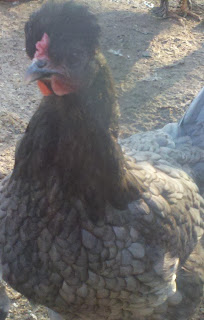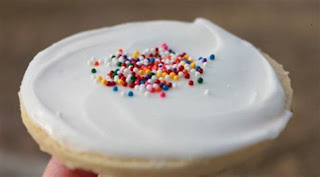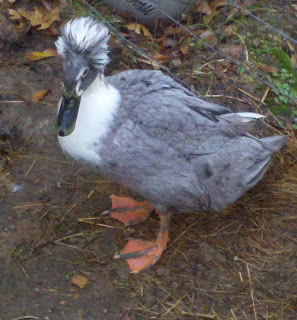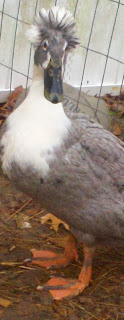As most of you know, we raise goats, chickens, donkeys, and rabbits here on our little homestead. During the summer, our animals forage and graze around for food and we supplement it with grains and sunflower seeds when need be. In the winter, we used to have to buy a LOT of feed and hay to sustain our animals through the winter. It quickly becomes quite costly.
A few months back we decided that we would look into growing fodder for the animals. We read all we could and decided it was the right path for us. We have been doing it ever since and we are HOOKED! Growing fodder is easy, cheap and takes up a minimal amount of space. How cheap is it? Well, a 50 lb. bag of grain will grow into 300 lbs. of fodder. Yes, you read that right. 50 lb. becomes 300 lbs. You save money and your animals will LOVE it. They go crazy when they see us coming with it.
When you decide to grow fodder, you have a variety of grains to choose from. The most popular that are used are barley, oats, or alfalfa. I know people have also used corn and wheat with success too. One note, if you buy oats, just buy whole oats. Crimped or rolled oats will NOT work. Just go to your local feed store to buy the grains.
Most people start off with barley because it is the easiest to grow. We started out with oats because our local feed store does not carry barley. We have grown alfalfa, oats and barley now and they all do fine. Barley does grow the quickest and thickest but our animals seem to prefer the oats. We grow oats for 2 weeks, then switch to barley for a week, then to alfalfa and repeat the cycle. Do what works best for you and your animals. Oats are really good for goats and donkeys digestion. It has great rumen fermentation and is a rich source of protein and it is high in fiber.
My husband built my shelves out of scrap lumber and welded wire we had laying around.
 |
| The shelf my hubby made for our fodder system. |
The trays I purchased from a dollar store. They are just cheap, aluminum roasting pans that you usually use and throw away. The size I bought are 15 1/2" x 12" x 2 1/2". We purchased 14 of these because I like to "harvest" two a day to feed the animals. Hubby drilled a lot of holes in each pan and I was ready to start.
On the first day, soak your grains in a bucket of water for 8-12 hours. Cover the grains with about 2" of water. I generally soak mine right before I go to sleep so they are ready when I am the next day.
On the second day, rinse the seeds well and then rinse them some more. Now, pour the rinsed grains into your tray(s) and place on the top shelf. You want the grains to cover the bottom of the tray but be no more than 1/2" deep. Again, I "harvest" two trays a day so I have 14 trays with 2 trays for each one of my 7 shelves. Be sure to soak seeds for tomorrow.
On the third day, move the tray(s) from the top shelf and move to the second shelf. Take the grains you soaked and rinse them and put them in trays and they go on the top shelf. Each day you will do this and lower the trays down a shelf. You will need to water these trays about twice a day. You water the top shelf and the water runs through each shelf to water the ones down below. Just be sure the water drains out well. They need to be moist but not soggy or else mold will grow and you don't want that. Do not forget to have some kind of tray on the very bottom to catch the draining water or you'll have a big mess. :-)
Remember, to have fodder every day, you must start a new batch soaking every day. It takes a week (for barley) or 10 days (for oats and alfalfa) to begin with but the nutritional value of fodder is so much greater than grain alone.
You can "harvest" it at any time but I do mine anywhere from 7-10 days depending on the grain I am growing. By this point, the greens are about 6"-8" tall and there is a nice root mat also. The fodder is easy to work with at this point also. Just pick it up in one big piece or tear it up and feed the animals. The animals will be almost salivating when they see you coming. How they enjoy the seeds, greens, and roots so much more than just plain grains and the digestibility is so much better that they eat less too. Another bonus of fodder is it takes no fertilizer, no soil, no special knowledge. That's right. It only uses water and sunlight to grow. Amazing!
With winter time, we place 4' plant lights on each end of our shelves to help the fodder grow better. We have had great success with this method.
 |
| Isn't this oat fodder beautiful?! |
Follow me on Pinterest
Follow us on Facebook
Follow us on Twitter
Follow us on g+
Follow us on linkedin
I shared this post on the following blogs:
Back to Basics
Hope in Every Season
Raising Mighty Arrows
The Self Sufficient Homeacre
Graced Simplicity
The Farmgirl Friday Blog Hop
Frugally Sustainable
From the Farm Blog Hop
The Backyard Farming Connection
Mind Body & Sole
Mountain Woman Journals
Little House in the Suburbs
The Homeacre Hop












































